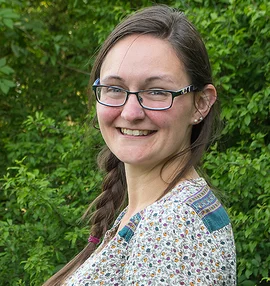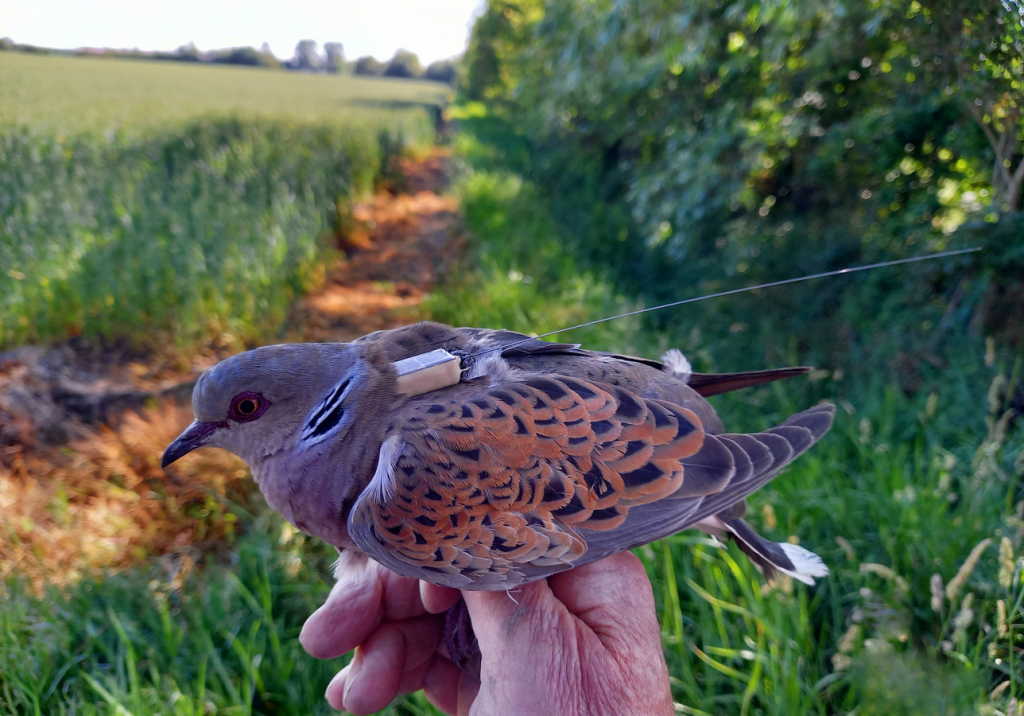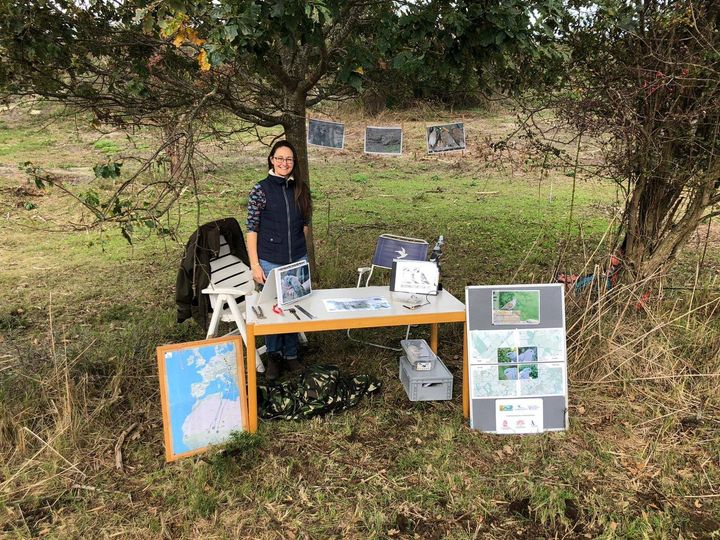
Genealogiecode: K XI ag.9.1
Door: Jennifer Vreugdenhil-Rowlands
Bron: Zomertortels.nl
Foto: Jennifer Vreugdenhil-Rowlands
In 2019, researcher Jennifer Vreugdenhil started the project ‘European Turtle Doves in a Changed Landscape’, in coordination with Het Zeeuws Landschap and assisted by subsidy provided by the Nationale Postcode Loterij. Jennifer’s research targets characterisation of locations where European turtle doves look for food.
For this research five European turtle doves were equipped with GPS transmitters. One of those turtle doves has been given the name Jos. The picture below shows Jos with one of the transmitters on his back.
You can follow him live on the zomertortels.nl website. The movements of these European turtle doves are described in a well written report which you can download from Jennifer’s website zomertortels.nl.
The return of ‘turtle dove Jos’ led to a lot of interest from the PZC, Omroep Zeeland and Vroege Vogels in May.

Jennifer Vreugdenhil-Rowlands
Genealogiecode: K XI ag.9.1
Turtle Dove Research in the Netherlands
Research showed that turtle doves are looking for very specific, limited amounts of places rich in weed seeds. Think of messy farmyards with lots of weeds, places where free-range (outdoor) chickens are fed, varietal seed production companies, and blue poppy seed fields. Thanks to subsidy by the Zeeland province, this research can be continued on the Walcheren island in the coming years. This further research will target the question of how we can enlarge food availability for turtle doves effectively.
A Beautiful Dove
The small, and shy, European turtle dove is a beautiful bird with striking colours. It differs from the grey Eurasian Collared Dove in that the turtle dove has a blue-grey head, light-brown breast, black and white stripes on the neck, and cinnamon-coloured wings with black spots. The European turtle dove lives in agricultural areas with wooded banks, hedges, and widely spread trees with rich undergrowth.

Jennifer Vreugdenhil-Rowlands
Genealogiecode: K XI ag.9.1
Food Fields
In cooperation with the agricultural nature association Natuurlijk Walcheren and Poldernatuur Zeeland, food fields are created close to territorial turtle doves. It is being researched how often those fields are visited by the doves. And again the use of GPS transmitters will be utilized. If it can be proven that the fields are being frequented, it’ll be all the more reason to ex-pand the number of food fields to areas all over the Netherlands.
Close to Extinction
European turtle doves are disappearing rapidly from our landscape. The decline of this migrating bird is a complex international problem.
In the Netherlands around 97% of all turtle doves has already disappeared.
The most important reasons are the decline of suitable habitats for breeding and wintering, being hunted during migration, illegal capture, and illness.
A Special Dove
What’s so special about the European turtle dove is that it’s the only dove species that winters elsewhere. From the start of April the turtle dove arrives in the Netherlands to breed. In September their 4000 kilometer [2485 miles] migration to their wintering habitat in the Sahel starts. The turtle dove takes around 3 weeks for this trip, with a rest stop in Portugal or Spain.
Donation
If you want to aid in saving this dove species in the Netherlands you can donate to Operation Turtle Dove of the Dutch Bird Protection Society. With your donation they can buy food for supplementing these doves. That way we can aid in saving this bird from extinction.
